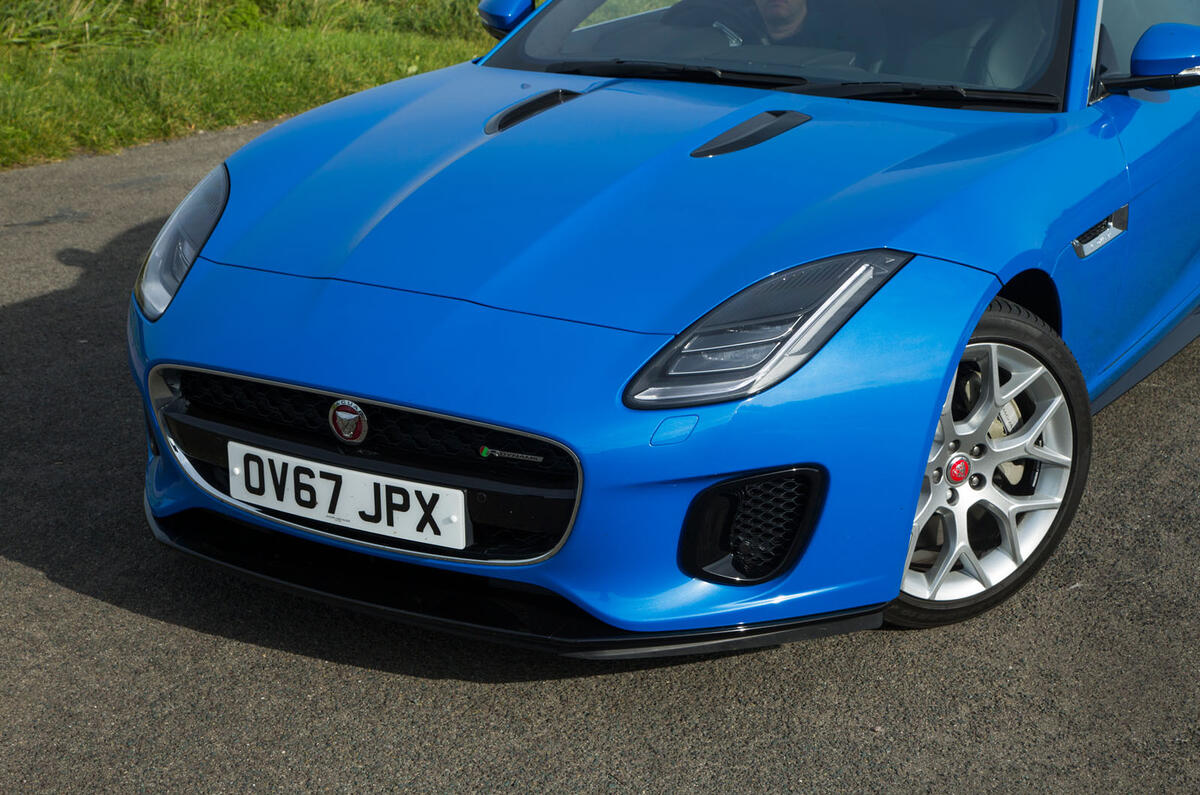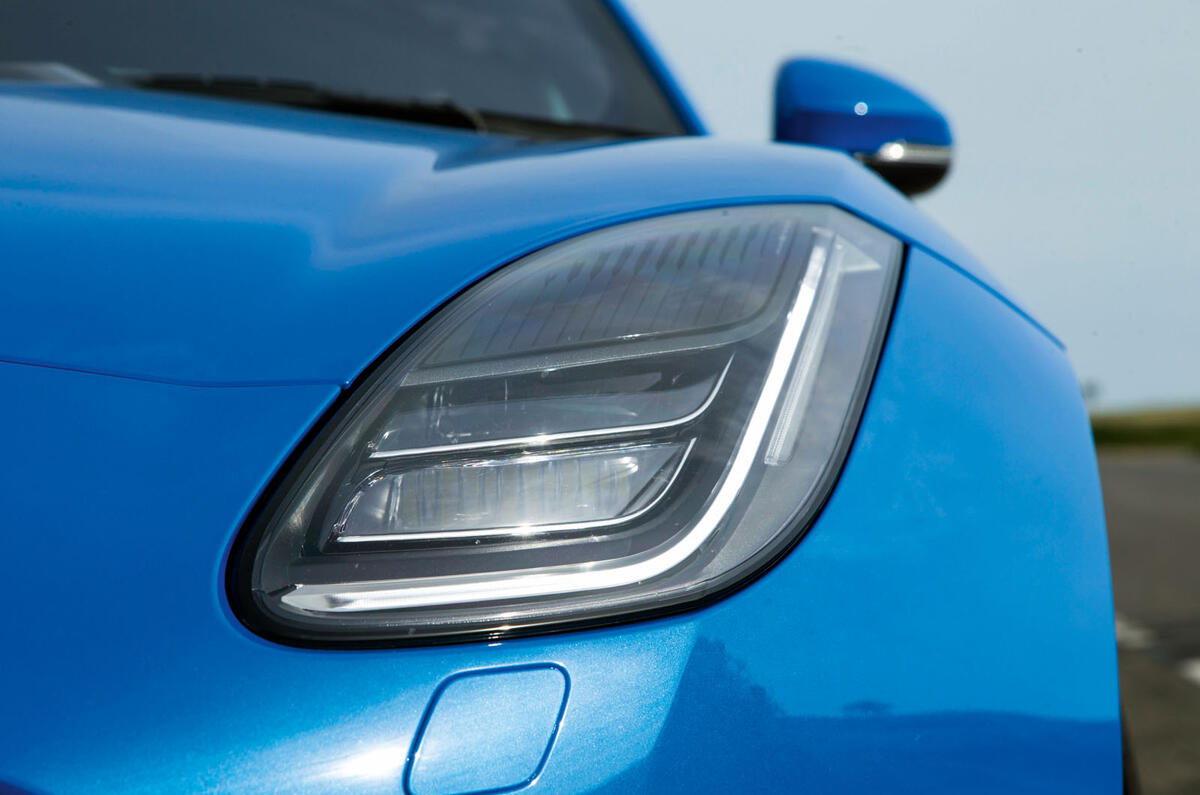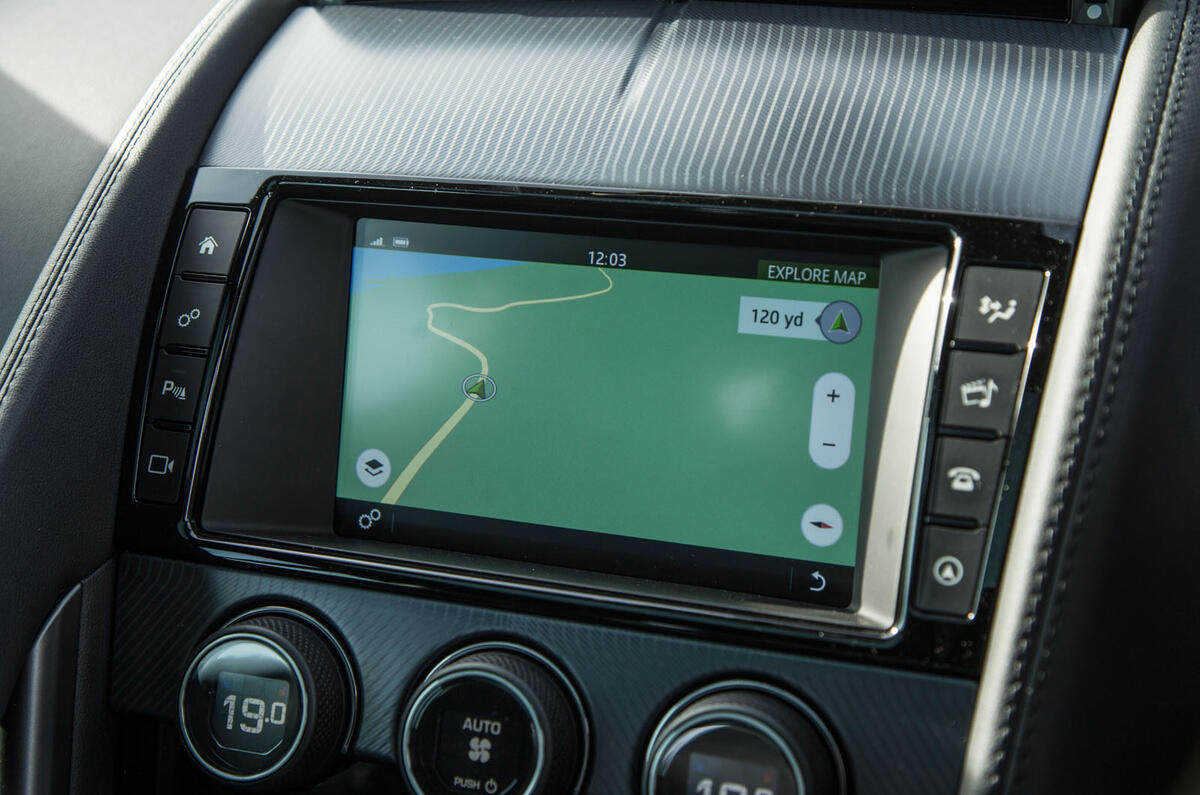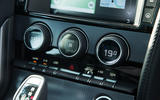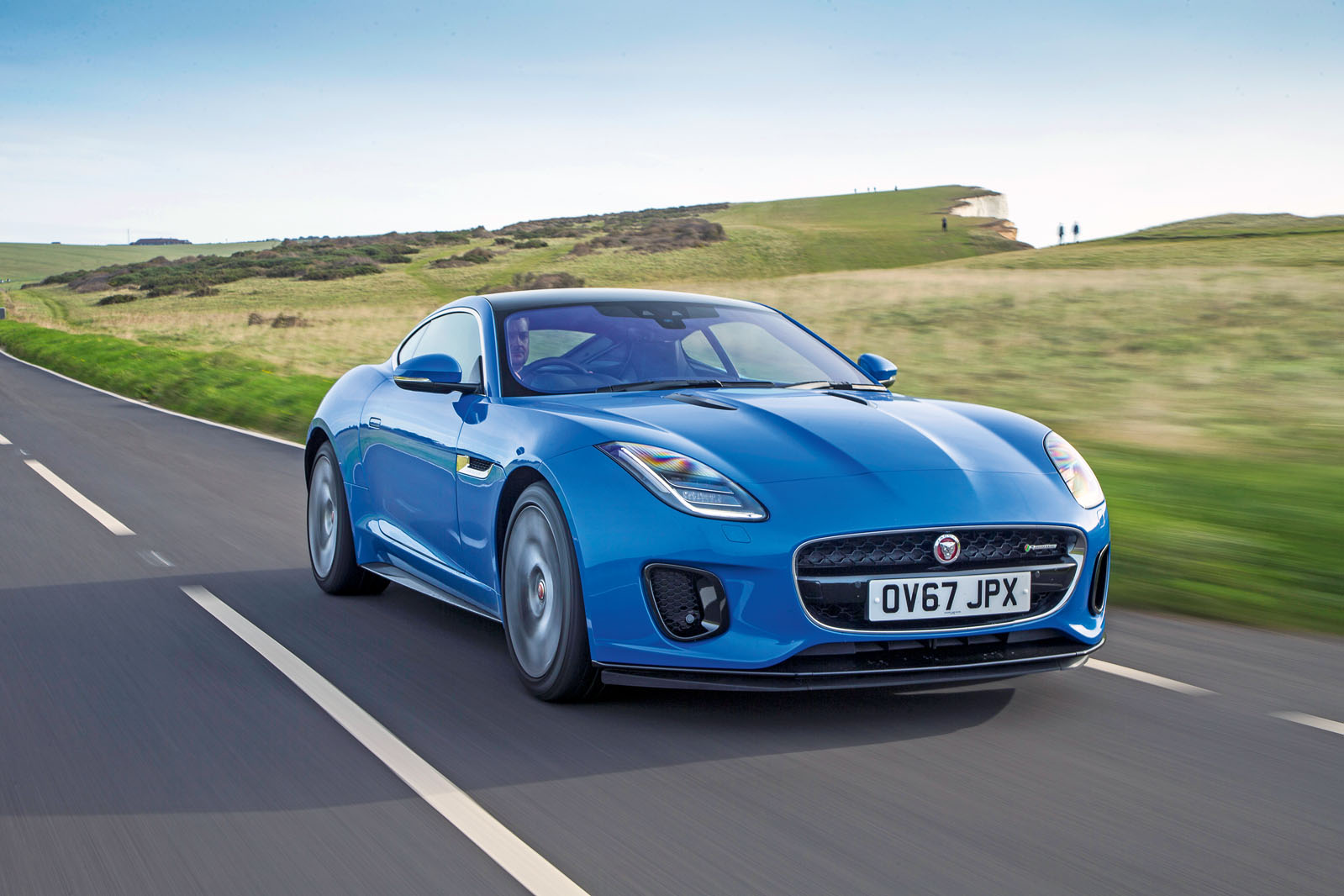Jaguar may have dropped the Jaguar F-Type into £50k sports car territory but it hasn’t taken the luxury out of the car.
You expect greater touring comfort and a richer interior ambience from this car than you’d find in a Porsche 718 Cayman S, and an Audi TT RS or BMW M2.
That’s also the primary reason why you’re willing to accept that this car will probably be a heavier and marginally less involving drive than those alternatives: because it’s an affordable sports-car-cum-GT going up against simpler sports cars.
So the first success of the F-Type’s stylish, enveloping cockpit is that it has enough leather and attractive-looking trim garnish to mark the car out as a true luxury product, and to make it feel more special than most of the cars that it’s descending the price scale to compete with.
The Audi’s Virtual Cockpit infotainment set-up makes the the F-Type’s look and feel decidedly old hat, it’s true – but that’s a high bar for any luxury car to measure up to.
In every other way except perhaps tactile material quality (because Jaguar’s switchgear doesn’t look and feel quite as expensive as it might everywhere), the F-Type’s interior conjures the same inviting, sporting, upmarket impression now that it did at its launch four years ago.
This remains a great driving environment and a fine place in which to spend time.
There’s enough space in either of the front seats for a 6ft 3in occupant to be comfortable. The standard part-leather seats combine the need for both cushioning and support very well and they position you in an ideal orientation to the controls.
There, you feel low to the ground, close to the car’s roll axis and close to the driven rear axle, as longways-engined sports cars have sited their drivers to useful effect for decades.
The F-Type remains a strict two-seater and it’s a little bit short of useful oddment storage around the cabin. Its boot is quite shallow, too, and has a narrow opening.
If you tick the relevant option box, you get access to it via what might be the most superfluous powered tailgate anywhere in production.
There’s enough room here for a few soft bags or one biggish flight case at a push, but this isn’t the most practical tourer.
Between its split cargo areas, a 718 Cayman S offers 30 percent more carrying space. All of which is the price of Jaguar’s rakish style, of course – and you’d imagine most owners would gladly pay it.
The F-Type’s 10.0in InControl Touch Pro touchscreen infotainment system is one area where the car is showing a little length of tooth.
It has a configurable home screen, allowing you easy access to the features you use most. You get navigation as standard, with routes plotted using real-time traffic information, and it’s a respectable but unexceptional system by luxury-level standards.
You also get some connected functionality via Jaguar’s InControl apps. Hardwire your phone to the USB port, for example, and you can access your Spotify music streaming account via the touchscreen — and there are smartphone mirroring apps for Apple and Android handsets. But Apple CarPlay isn’t fitted here, so interfacing with your music and contacts isn’t as easy as it might be.
Features such as wireless phone charging and customisable digital instruments aren’t available, either.
The standard 380W 10-speaker Meridian surround audio system was fitted to our car and sounded strong but unexceptional. It can be upgraded to 12 speakers and 770W for £990.



